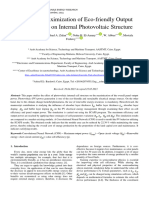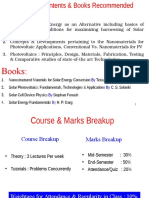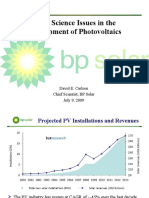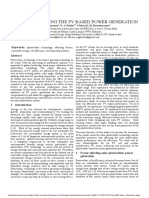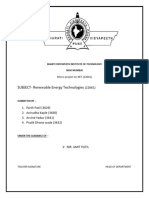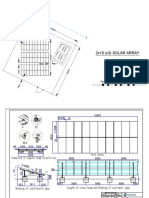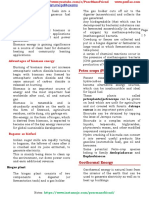Personal Project Proposal Outline
Student ID 20osb1136
Student name: Vasistan Raj Muluka
Subject Phyciscs
Supervisor Mrs. Rajesh
Topic Renewable Energy
Research Question How does light intensity influence the power output of a solar
panel?
Why this Topic Understanding how they work under different conditions can help improve
their efficiency.
Goal / Inquiry "How does light intensity influence the power output of a solar
Question. panel, and what does this reveal about the efficiency of
Use the context to photovoltaic cells?"
help you write your
goal or inquiry
question
Three facts, from Relevance to Sustainable Energy:
three different
sources, to show the Solar panels are a crucial renewable energy source for reducing dependence
importance of the on fossil fuels. By understanding how light intensity affects their
topic performance, we can improve their design and installation.
Fact: The power output of photovoltaic cells is directly proportional to light
intensity, meaning better placement or light management can maximize
energy production.
Enhancing Efficiency:
Photovoltaic cells have efficiency limits (e.g., the Shockley-Queisser Limit),
so optimizing light conditions helps get the most out of this technology. This
is particularly important in areas with varying sunlight conditions.
Fact: Not all light energy is converted into electricity, and efficiency is
strongly tied to how much light hits the solar cell.
Practical Applications in Solar Energy Systems:
Understanding the relationship between light intensity and power output
helps design solar panels that perform well in both high and low light
conditions.
Fact: Solar panels perform less efficiently under low light conditions (e.g.,
cloudy weather), which highlights the need for innovations like tracking
systems or energy storage solutions.
Screenshot of PP International Energy Agency (IEA). "Solar Power." IEA, 2023. www.iea.org
Project sources with
MLA9 citations, with U.S. Department of Energy (DOE). "Solar Energy Technologies Office." DOE,
annotations, for 2023. www.energy.gov
above facts
Personal interest in Trying to Learn More.
topic.
What hobbies and
interests outside of
school link to your
project?
Previous experience These were the Chapter of:
related to the topic. -Chapter 6
What topics studied, -Chapter 7
activities, projects or
skills from school
could help?
Hypothesis ,variable Optimization of Light Exposure: By adjusting the angle and
s orientation of solar panels (using tracking systems), their exposure
to direct sunlight can be maximized throughout the day, improving
power output.
Advanced Energy Storage: The integration of efficient energy
storage systems can store excess energy generated during high
light intensity periods (e.g., midday) for use during low light
conditions (e.g., cloudy weather or nighttime), ensuring consistent
energy supply.
Improved Photovoltaic Efficiency: Enhancing the materials and
design of solar cells, such as incorporating multi-junction cells or
organic photovoltaics, can increase the amount of sunlight
converted into electricity, particularly in suboptimal lighting
conditions.
Three ideas for
possible outcomes 1. Smart Solar Panels with Integrated Light Tracking
or products
Outcome: Solar panels equipped with smart tracking systems that
automatically adjust the angle and orientation to follow the sun
throughout the day, maximizing light exposure. This would optimize
energy production, especially in areas with inconsistent sunlight.
Product: A solar panel system with built-in motorized mounts and
sensors to track light intensity, improving energy output by adapting to
changing sun positions and cloud coverage.
2. Energy Storage Solutions for Low Light Conditions
Outcome: Development of advanced energy storage systems that allow
solar energy to be efficiently stored during periods of high light intensity
(e.g., sunny days) and used when sunlight is minimal (e.g., cloudy days
or at night). This addresses the issue of intermittent energy generation
from solar power.
Product: A high-efficiency battery or energy storage unit that is paired
with solar systems, capable of storing energy during peak production
times and ensuring a steady power supply during low light conditions.
3. High-Efficiency Photovoltaic Cells with Improved
Light Absorption
Outcome: New photovoltaic cell designs that enhance light absorption
and improve conversion efficiency, especially under low light
conditions. This would help solar panels perform better in regions with
frequent cloud cover or during winter months when sunlight is weaker.
Product: A next-generation solar cell with enhanced materials (e.g.,
multi-junction cells or organic photovoltaics) designed to capture a
broader spectrum of light, reducing the impact of low-light
environments and maximizing overall energy conversion efficiency.
Process Journal Read It
Format
Anything else?
Supervisor’s
comment






